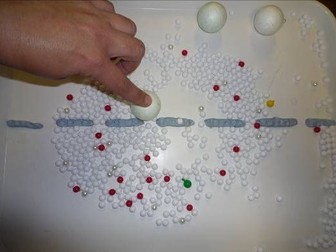
KS3 / GCSE Cross Curricular - Mission to Mars
Ideal for a KS3 / GCSE cross-curricular day. A good problem solving activity with a PowerPoint and handout. In addition to designing a lander for their egg and earning tokens to purchase the materials to build it in teams, they must also design a lander that will release the egg safely on impact!!!!! In addition to Science and Maths, there is an element of enterprise here too as the students earn tokens through maths challenges, to purchase the materials that they need to build their design. (Sorry about the ad on the first clip)
